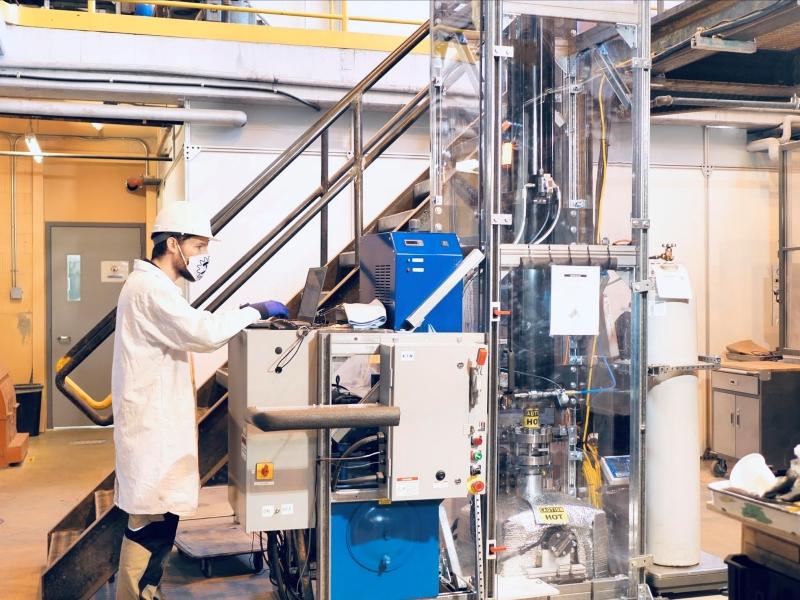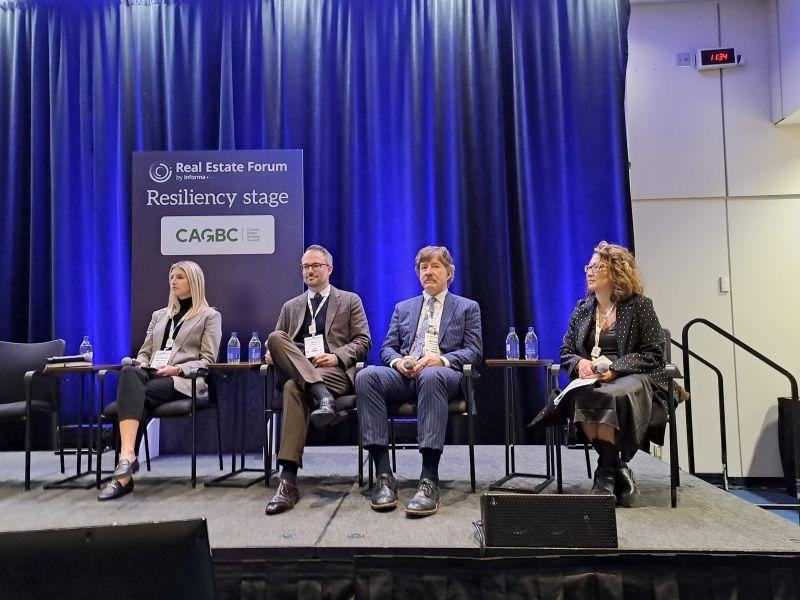 The Canada Green Building Council (CAGBC) is joining a global network of peers during World Green Building Week in promoting energy efficiency, lowering carbon emissions and resiliency in the built environment.
The Canada Green Building Council (CAGBC) is joining a global network of peers during World Green Building Week in promoting energy efficiency, lowering carbon emissions and resiliency in the built environment.
The week-long campaign from Sept. 11-15 involves over 75 national Green Building Councils and their 46,000 global members, all raising awareness about the transition to more sustainable buildings.
Among its many programs, the CAGBC certifies buildings under Leadership in Energy and Environmental Design (LEED) and maintains Zero Carbon Building (ZCB) standards across the country.
CAGBC president and CEO Thomas Mueller told SustainableBiz World Green Building Week raises awareness the CAGBC is part of a global network with a common purpose: “Every building that is built anywhere in the world should be a green building, because it’s good for people, planet and profit.”
Several key themes are being emphasized, some of which the CAGBC is already addressing via its certifications and standards.
Themes of World Green Building Week for the CAGBC
Mueller highlighted the three themes the CAGBC is focusing on.
The first is energy transition through energy efficiency. Mueller described Canada as a “real laggard” in some sectors on energy efficiency, despite its strong links to decarbonization, which is the second theme.
“If we don’t get our buildings to be more energy efficient, it’s really hard to replace fossil fuels with renewables or green electricity. It’s going to be really hard to electrify buildings if we don’t reduce the demand, particularly on heating and cooling,” Mueller said.
The third theme, resiliency against the impacts of climate change including extreme heat, drought, flooding and wind, must become a more prominent consideration for buildings, he said. “Canada, and the rest of the world, I think missed the boat on resiliency.
“We need to think about buildings that are going to last 50, 60, 100 years,” he said. “It doesn’t make sense anymore in a flood area that you put your boiler in the basement."
How the CAGBC is supporting the transitions
The CAGBC does not have a certification for climate resiliency, but Mueller said existing standards communicate its importance and outline strategies and credits which contribute to resiliency. LEED includes resiliency credits, for example.
ZCB standards also partly overlap with the resiliency issue.
Energy efficiency is directly addressed through LEED.
Building owners are recognizing LEED’s value in reducing operational costs and retaining the value of their buildings, combined with ESG standards from the International Sustainability Standards Board and GRESB.
On the embodied carbon front, the CAGBC’s ZCB standard pushes to reduce this in both design and performance. Interest has grown in the standard because it provides guidance on decarbonizing new and existing buildings, Mueller said.
The CAGBC is the first national green building council to launch a ZCB standard.
Mueller has heard people question the high cost of adjusting to the ZCB standards, which he said is due to technologies like heat pumps that are not as ubiquitous as gas boilers. But costs are manageable in the long-term and the standards serve as a form of transition planning, he argued.
Owners of commercial real estate and institutional investors need to think about their entire portfolios of buildings and “how they can transition an entire portfolio of buildings to lower- or zero-carbon over the next 30 years.”
Approximately 150,000 large buildings (over 30,000 square feet) have to be lower- or zero-carbon by 2050 for Canada to achieve its climate goals, the CAGBC estimates.
Mueller said the CAGBC is introducing accelerator programs for topics like sustainable materials and low-carbon construction, to bring industry stakeholders together to provide solutions.
Canada has a shortage of skilled construction workers to help achieve carbon reduction targets for the sector, he said. To address this gap, the CAGBC received a $7.8-million grant from Employment and Social Development Canada to work with five large industry associations for a low-carbon training program.
What to expect from the CAGBC
Its business partners in the U.S. will launch the fifth version of LEED for Operations and Maintenance at the end of September and an updated iteration of LEED for Building Design and Construction in November or December. Mueller believes this will launch with a stronger emphasis on decarbonization, equity and environmental regeneration.
The CAGBC plans to update its ZCB design standards and unveil the changes in June 2024. As part of this process, it will examine performance standards for recognizing buildings that are retrofitting but not reaching net-zero.
Embodied carbon will remain a critical focus in the future, with the CAGBC working with its peers and industry partners on targets for the decarbonization of materials like cement and steel.










